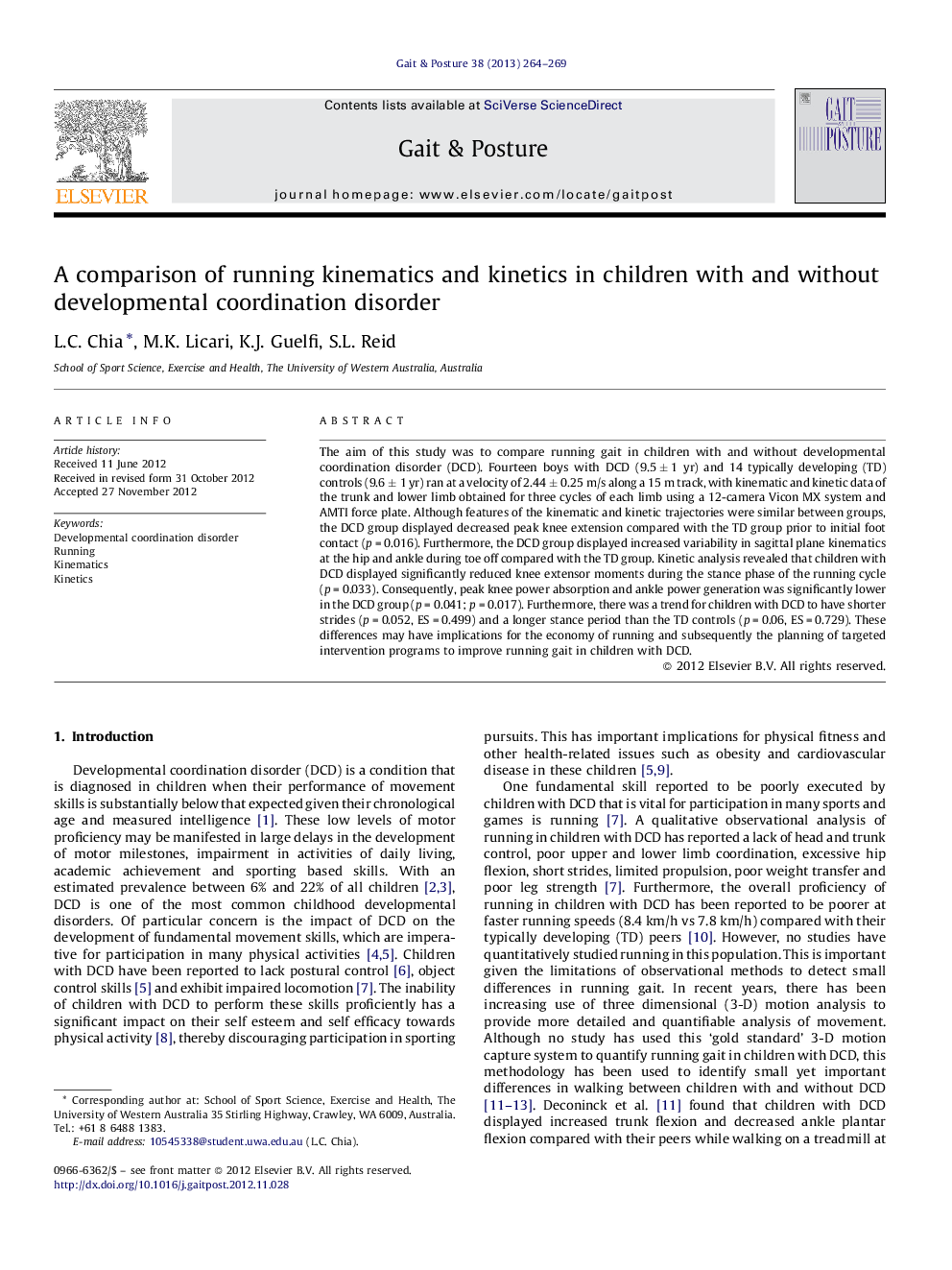| Article ID | Journal | Published Year | Pages | File Type |
|---|---|---|---|---|
| 6207343 | Gait & Posture | 2013 | 6 Pages |
The aim of this study was to compare running gait in children with and without developmental coordination disorder (DCD). Fourteen boys with DCD (9.5 ± 1 yr) and 14 typically developing (TD) controls (9.6 ± 1 yr) ran at a velocity of 2.44 ± 0.25 m/s along a 15 m track, with kinematic and kinetic data of the trunk and lower limb obtained for three cycles of each limb using a 12-camera Vicon MX system and AMTI force plate. Although features of the kinematic and kinetic trajectories were similar between groups, the DCD group displayed decreased peak knee extension compared with the TD group prior to initial foot contact (p = 0.016). Furthermore, the DCD group displayed increased variability in sagittal plane kinematics at the hip and ankle during toe off compared with the TD group. Kinetic analysis revealed that children with DCD displayed significantly reduced knee extensor moments during the stance phase of the running cycle (p = 0.033). Consequently, peak knee power absorption and ankle power generation was significantly lower in the DCD group (p = 0.041; p = 0.017). Furthermore, there was a trend for children with DCD to have shorter strides (p = 0.052, ES = 0.499) and a longer stance period than the TD controls (p = 0.06, ES = 0.729). These differences may have implications for the economy of running and subsequently the planning of targeted intervention programs to improve running gait in children with DCD.
⺠First study to examine running kinematics and kinetics in boys with DCD. ⺠Boys with DCD displayed differences in lower limb kinetics of running. ⺠Boys with DCD need individualised programs given the variability in running gait.
